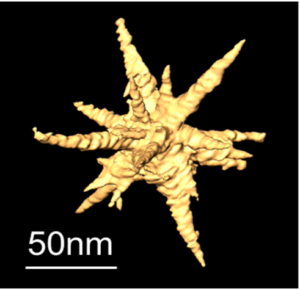3D and 4D electron microscopy and spectroscopy
Prof. Ilke Arslan, Argonne National Laboratory
Abstract

With recent advances in electron microscopy methods, it is now possible to move away from real time, 2-D projection imaging under vacuum conditions in a transmission electron microscope (TEM). Most materials that require analysis in a TEM are complex and three-dimensional. Electron tomography provides a path to take many images at different angles, and use various algorithms to reconstruct the 3-D morphology of the nanomaterial. Similarly, many exotic materials phenomena occur at time scales not observable by standard TEM detectors. Ultrafast electron microscopy, or 4-D TEM, brings femtosecond lasers into the TEM to photo-excite femtosecond electron pulses. Examples will be presented on how 3-D and 4-D electron microscopy are paving the way to new scientific discovery.
Biosketch

Dr. Ilke Arslan is the Director of the Center for Nanoscale Materials, a Department of Energy Office of Science scientific user facility, at Argonne National Laboratory. She holds a doctorate in physics from the University of California-Davis and has been honored with the Presidential Early Career Award for Scientists and Engineers, the Oppenheimer Science and Energy Leadership Program, and the Secretary of Energy’s Honor Award. Her research interests include understanding dynamic processes in materials using ultrafast transmission electron microscopy, and the in-situ behavior of nanomaterials for energy applications.
